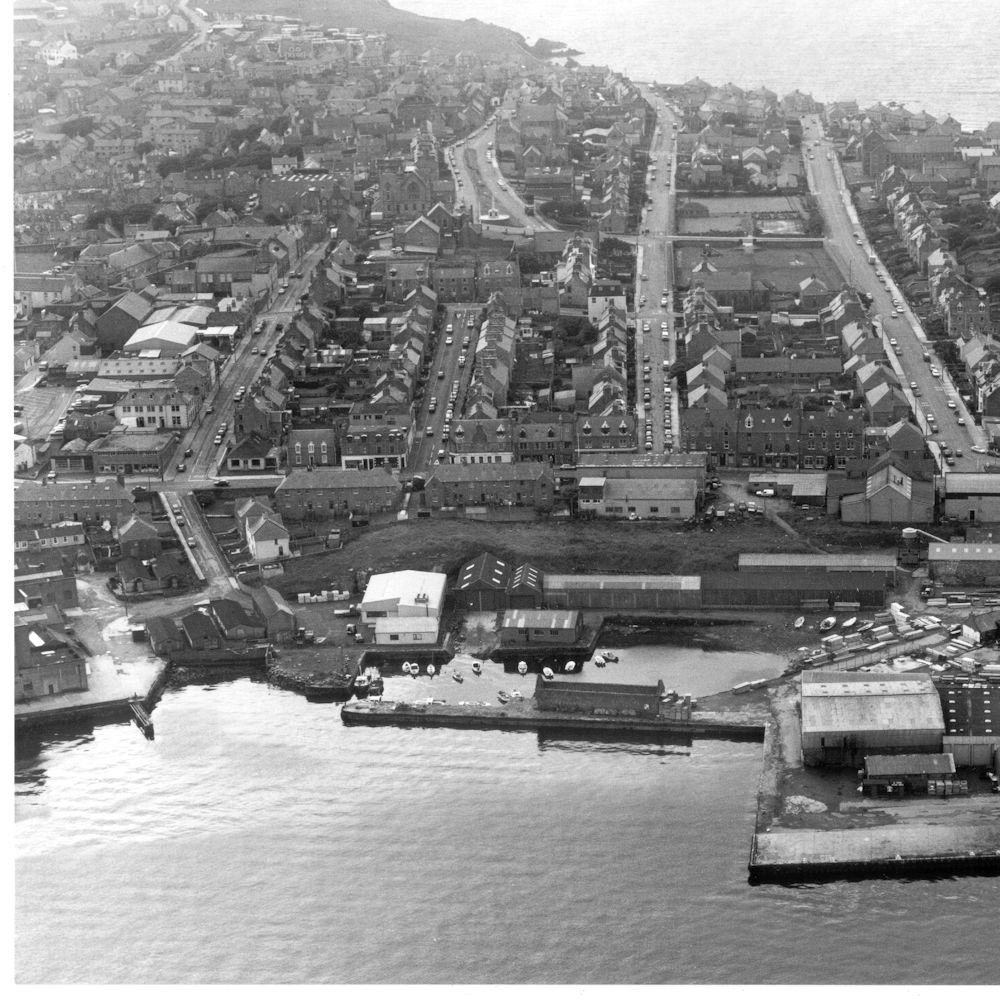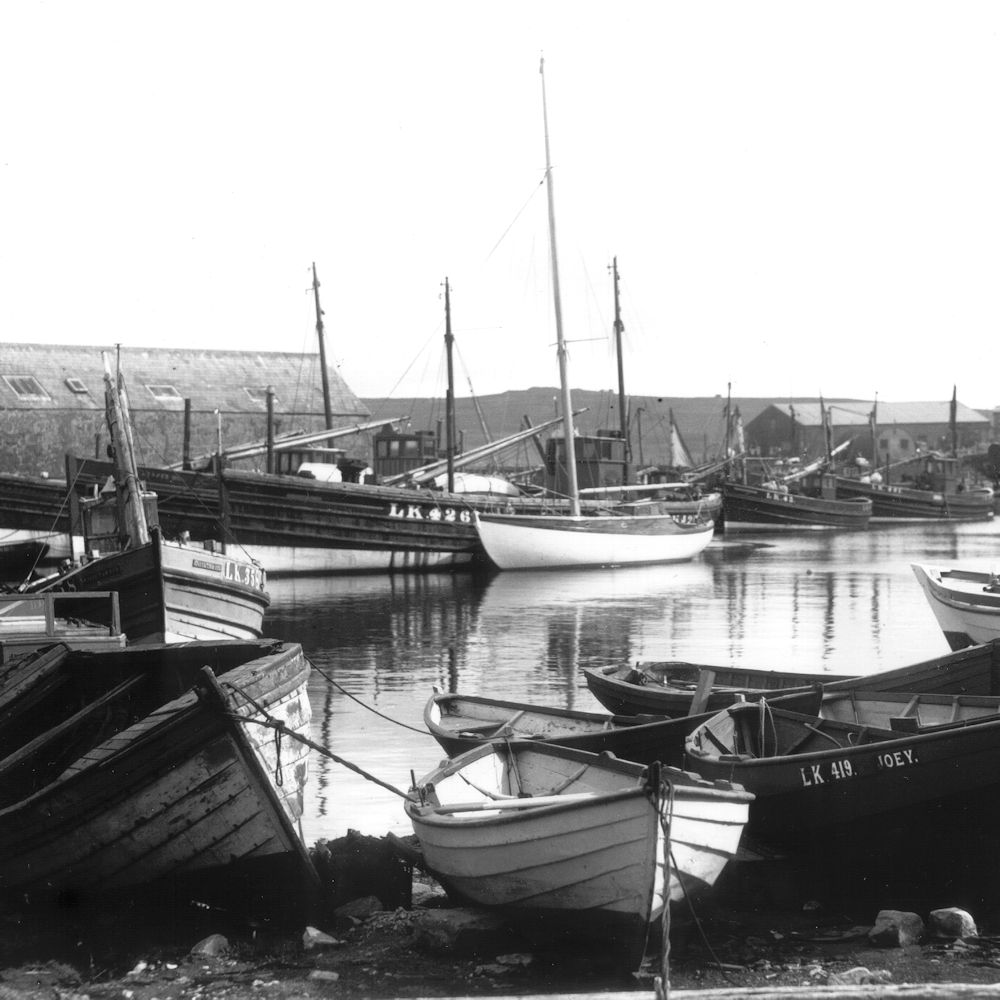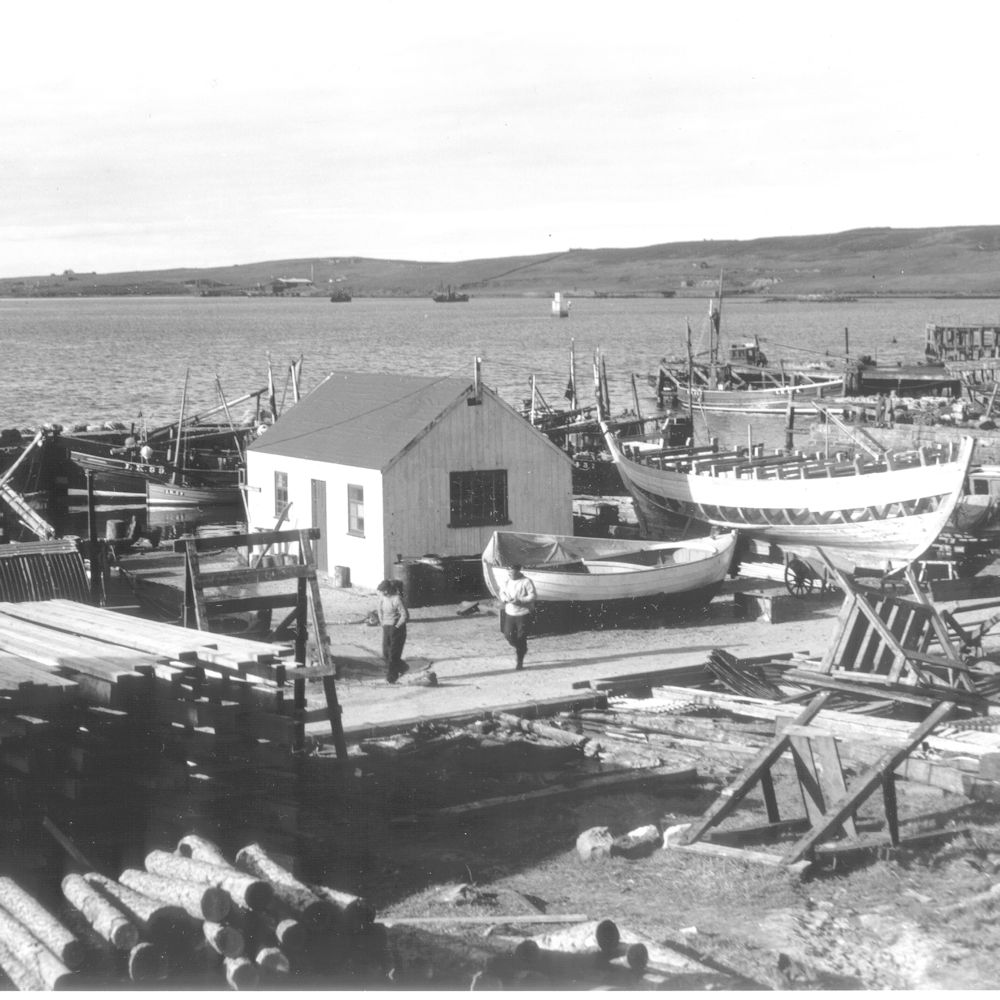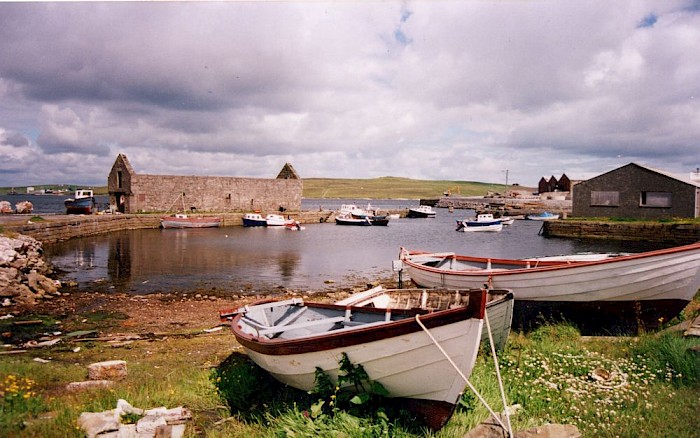History
Built by the firm of Hay & Ogilvy in the 1820s, Hay’s Dock soon became one of the busiest spots in Lerwick.
The firm’s leading light was William Hay, who entered into a partnership with his wife’s family in 1822. The firm invested in the herring fishery and vessels landed the catches for curing at the Freefield base, located next to the dock.
As trade grew, the site boomed. Quays, docks, a shipyard, warehouses and workshops sprang up, together with stores for salt, housing for tradesmen, warehouses for provisions, cooperages, smithies, sawmills and ship chandlers.
The shipyard built a number of herring drifters, cod smacks, trading schooners and the barque North Briton, the largest vessel ever built in Shetland.
One visitor described the company’s great stores, building yard and curing houses as “an immense concern, containing within itself the means and materials of every kind of work, and rather resembled a small self-contained colony than a private establishment, so numerous and complete are its docks and harbours, shops, quays and other conveniences.”
 View Full Size
View Full Size View Full Size
View Full Size View Full Size
View Full SizeBy 1839, Hay & Ogilvy was prosperous, owning or managing 100 fishing vessels, but this didn’t last. By 1842 both the company and the Shetland Bank, in which they were the majority shareholders, were declared bankrupt.
William Hay and his sons formed Hay & Company in 1844. The new firm quickly established itself as Shetland’s main importer and exporter, trading as fish curers, factors, wholesalers and retailers with branches across the isles. The shipyard too was back in business, building many boats from ‘fourareens’ to the 67 foot Fifie, The Swan.
Following WW1, Hay’s Dock went into a long period of decline and prior to its restoration was used as a small boat harbour.
